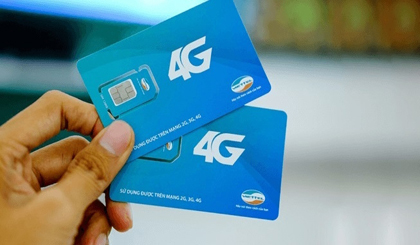Vietnamese carriers use prices as trump card in race to win 4G subscribers
Four months after Viettel launched the first 4G services in Vietnam the number of subscribers has risen to an impressive 3.5 million, underlining the great potential of this technology and is therefore easy to understand why all carriers have the price card at the core of their strategies.
When 4G was still a plan on paper, all of the carriers announced that the costs would be cheaper than 3G and the current prices have been as promised. As the first carrier to commercialise 4G since April this year, Viettel has offered its subscribers a wide choice of 4G plans with varying prices and data limits, such as VND40,000 (US$1.76) for one gigabyte of data or VND70,000 (US$3.08) for 2 gigabytes of data.
 |
The competition between carriers has helped to lower 4G prices, making it easy for users to switch to a different plan that meets their needs. Specifically, 4G prices in Vietnam are relatively cheap, compared with US$5.4 for one gigabyte in Thailand, US$10 in Singapore, US$11 in the UK, US$11.6 in Spain and US$20 in the US.
According to some experts, the 4G prices charged by Vietnamese carriers are reasonable, offering easy access to new services, adding that providers still profit when offering 4G services at lower prices than 3G as the cost of providing one gigabyte of 4G services is lower than 3G.
Although carriers have invested millions of dollars into 4G technologies and hope to entice more users, the figure of 3.5 million 4G subscribers in the past four months, though impressive, remains an early indication to rate whether Vietnamese mobile users have enthusiastically embraced this technology or not.
However, in addition to the extensive coverage, users are expecting more breakthroughs in quality. If carriers want to make 4G much better than 3G, there are still many things to be done so that users can see that the voice quality on 4G is superior to the older technologies. Furthermore, carriers must continue investing in 4G infrastructure and optimise their networks to enhance the efficiency and quality of their services.
(Source: NDO)
 về đầu trang
về đầu trang







